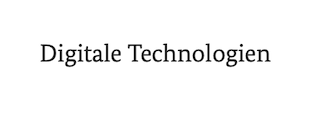Na, Logisch
Sustainable paint development through digital technologies for climate and environmental protection
The automotive manufacturing industry consumes a great deal of energy overall, causing high carbon emissions in the process. One thing that very few people are aware of is that approximately 40 percent of the primary energy required is used for vehicle painting. This is why the standards are so high: For example, the composition of the paints used is subject to regulations derived from the European Green Deal for a sustainable European Union. Users are also demanding consistent quality and processability from paint manufacturers.
In order to satisfy these requirements and replace individual paint components as needed, producers have had to follow a time-consuming and energy-intensive trial and error process until now. In paint formulation, raw materials are combined and then applied to a surface, dried and subsequently characterised. If there are any impermissible deviations, they must undergo this process again. Making this cycle efficient and sustainable is the mission behind the Na, Logisch project: It strives to optimise paint development using digital technologies to significantly reduce the number of failed attempts in the future, for instance. To achieve this goal, material and process data is collected centrally so that AI-supported models can be developed – for both the processes and the chemical formulations. A sample industrial painting system is used for the practical test.
One key development objective the project team has defined is using a digital twin for paint production and application. A database with process parameters and quality characteristics will be created for this purpose. It will form the basis for an AI-supported prediction model.
The goal is to make the digital technologies developed within the scope of the Na, Logisch project available to German paint manufacturers and the paint processing industry in the future. In addition to process optimisation, this could minimise the previously high reject rates – manufacturers continue to report 5 to 30 tonnes of paint waste per year. Formulations can be adapted quickly without any loss of quality. The project could also facilitate the use of sustainable raw materials for paints, whose material properties are generally subject to considerable fluctuation. This is a competitive advantage for the approximately 200 German companies – 90 percent of which are SMEs – that are involved in paint production and which, based on current forecasts, will generate revenues of around 11 billion euros in 2025.
Consortium:
- AOM-Systems GmbH
- Fraunhofer IFAM
- Niederrhein University of Applied Sciences
- Füll Lab Automation GmbH
- Pi Probabiligence GmbH
- Mankiewicz Gebr. & Co.
- Recommend this page:
- Print view
